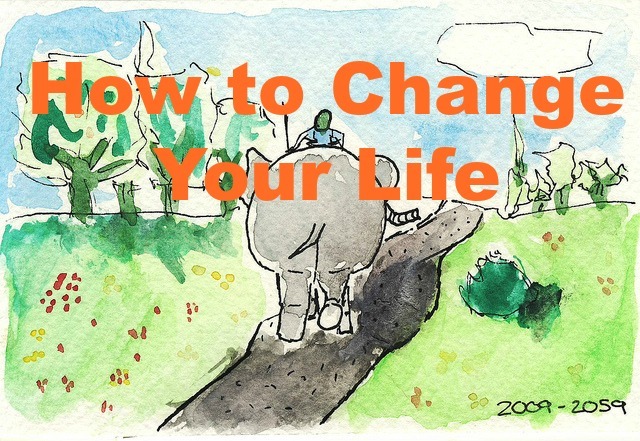
Making changes is hard. Anyone who has ever tried to change their life for the better can attest to this.
Look at the following two examples:
- You make a firm resolution to start getting up at 6:00 a.m. each morning so that you can get some exercise in before work, but when the alarm goes off in the morning you hit the snooze button and go right back to sleep.
- You swear off sweets for a couple of months so that you can be slim in time for swimsuit season, and then you break down at the first sight of a Triple Double Oreo.
 Why is making changes so difficult? And what can we do to make it easier?
Why is making changes so difficult? And what can we do to make it easier?
Brothers Chip and Dan Heath tackle the subject of change in their book, Switch: How to Change Things When Change Is Hard. The Heath brothers explain that change is difficult because of a conflict that’s built into our brains. The conflict exists because we have two minds:
- A Rational Mind; and
- An Emotional Mind.
These two minds are constantly competing for control.
In “Switch”, the Heath brothers refer to the rational mind as the Rider, and they refer to the emotional mind as the Elephant. They explain that if you want to start acting differently, you need to follow a three-part framework:
- Direct the Rider
- Motivate the Elephant
- Shape the Path You Want to Travel On
In this post you’ll discover more about the Rider and Elephant analogy. In addition, you’ll learn one strategy for directing the rider, one strategy for motivating the elephant, and one strategy for shaping the path you want to be traveling on. That is, you’ll discover how to change your life.
The Rider and The Elephant
As was stated in the introduction, the Heath brothers use the analogy of a Rider and an Elephant in order to explain the tension that exists between the rational mind and the emotional mind.
Perched atop the Elephant, the Rider holds the reins and appears to be the one in control. However, the Rider is very small compared to the Elephant, so his control is tenuous at best. Whenever the Rider and the Elephant disagree on which way to go, the six-ton Elephant usually wins out.
The Elephant wants instant gratification, while the Rider wants to sacrifice short-term gains in order to acquire an even larger reward in the future. Look at the following:
- The Elephant wants to go out dancing, while the Rider wants to stay in to work on creating a passive source of income.
- The Elephant wants a cheeseburger with fries, while the Rider wants a lean protein with some veggies on the side.
The Rider can keep the Elephant on the right path for a while through the use of willpower. The problem is that willpower is limited. More often than not, the Rider’s willpower is depleted while the goal is still nowhere in sight. At that point, the Rider loses control and the Elephant wanders off the path.
That’s why you make plans to spend the night hard at work, but you end up boogying the night away at a nightclub (silently cursing the Elephant).
In order to make a change you need to enlist both your rational and your emotional minds–in other words, get the Rider and the Elephant to agree on where to go. In addition, you need to make sure that the path that leads to the change that you’re trying to make is easy to travel on. There’s more on each of these below.
Direct the Rider – Make It Clear What Needs to Be Done
Not all of the problems related to change stem from the Elephant. Sometimes, the Rider is the one who appears to be resisting change.
The Heath brothers point out that most of the time, what looks like resistance from the Rider is actually a lack of clarity. That is, the Rider isn’t sure what needs to be done in order to create the desired change. Therefore, he ends up leading the Elephant in circles.
Dan and Chip explain that there were two professors at West Virginia University who wanted to persuade people to eat a healthier diet. Their problem was that telling people to “eat a healthier diet” is very unclear. People will not act to make the desired change because they don’t know what to do.
- Is there any particular diet they should go on?
- Should they stop eating meat? Should they limit eating meat to the weekends?
- What if they just try portion control?
The number of possibilities for eating healthier is limitless, and so the Rider does a lot of thinking and analyzing, but nothing gets done.
These two professors had data showing that most Americans drink milk. In addition, milk contains very high levels of saturated fat. Just by switching from whole milk to 1% milk, the average diet would immediately attain the USDA recommended levels of saturated fat.
Therefore, the vague instructions of “eat a healthier diet” turned into the following: “switch from whole milk to 1% milk”. That’s much clearer and easier to act on. But they didn’t stop there.
Most people will drink whatever milk is in their refrigerator. The key is to make the decision of selecting the 1% milk, instead of the whole milk, at the supermarket. In the end, the instructions that the professors started giving people were something like the following:
“When you’re at the grocery store, purchase 1% milk instead of whole milk”.
These instructions are crystal clear. The Rider knows what to do, and can confidently direct the Elephant. To make change, be very clear on what it is that you’re going to do.
Motivate the Elephant – Make an Emotional Appeal
When you want to make a change, it’s vital that you get the Elephant on board. After all, the Elephant is the one that’s going to be doing the work. In addition, you need the Elephant’s energy and passion. However, you can’t convince the Elephant with logic and facts.
The Elephant can “know” that something is good for you, and still not be motivated to start walking down the path toward the change that you want to make. This is because what’s important to the elephant are emotions, not logic. In order to motivate the Elephant you need to make an emotional appeal.
Here are some ways to appeal to the Elephant’s emotions:
- Make the change visual. If you’re trying to lose weight put a photograph of yourself at your ideal weight up on your refrigerator.
- Think of how good you felt when you were at that weight, and imagine feeling that way again.
- Look for stories of people who have succeeded in making the change that you’re trying to make, and let those stories inspire you.
To make changes, appeal to your emotions.
Shape the Path – Craft Your Environment to Support Change
Imagine the following scenario: the Rider is trying to get the Elephant to climb up a steep, rocky path. Even if you’ve appealed to the Elephant’s emotions, for how long do you think the Elephant will remain on that difficult path? Obviously, not for long.
Now think of a path that’s on a downward slope which has been cleared of all debris. Better yet, think of a path that’s been slicked with oil; the Elephant just has to slide down the path. Isn’t it much more likely that the Elephant will stay on that path? Of course it is.
You need to set up your environment in a way that will allow you to succeed. If you’re trying to lose weight, there are many things you can do to set up your kitchen environment in a way that will help you to achieve your goal of weight loss. Here are some examples:
- Have a bowl of fruit on the counter.
- Throw out the cookie jar.
- Put healthy snacks in clear containers and place them in the refrigerator at eye level so that they’re the first thing that you see when you open the fridge.
- If you must have potato chips and other fattening snacks in the house, place them in a cupboard that’s difficult to reach.
You want to make it as easy as possible for the elephant to walk down the right path. Make changes by setting up your environment in such a way that changes are easy to make.
Conclusion
Think of a change that you want to make in your life, whether it’s modifying your eating habits, becoming an early riser, and so on. Now do the following:
- Make your goal very specific and give yourself very clear instructions on what you’re going to do.
- How can you make your goal emotionally appealing?
- How can you set up your environment to help you?
Live your best life by making positive changes in your life with the strategies explained above.


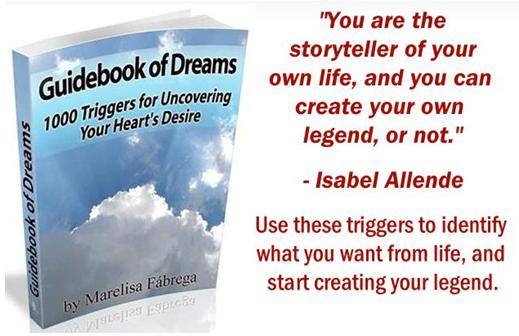
Related Posts:
- Eight Ways to Build New Habits and Make Them Stick
- 16 Personal Development Goals That Will Make You Happier and Sexier
- 16 Ways to Create a Life That Rocks
- How to Conduct a Life Audit
Did you enjoy this article? Subscribe to “Daring to Live Fully” by RSS or by email, and get free updates.

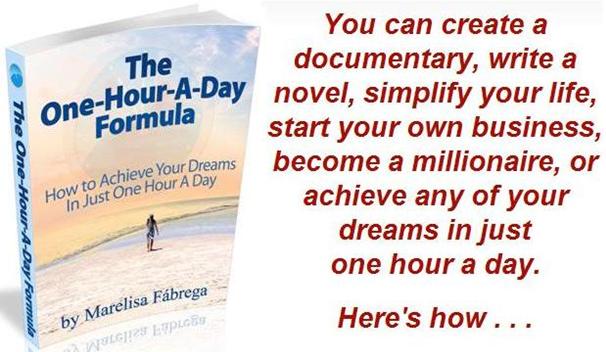
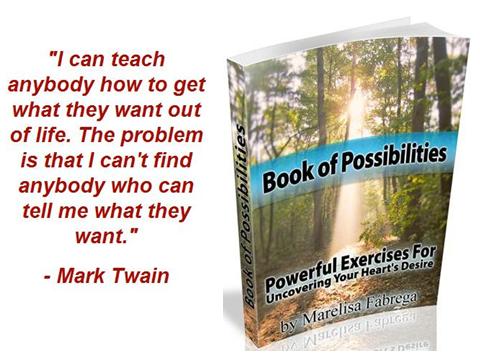



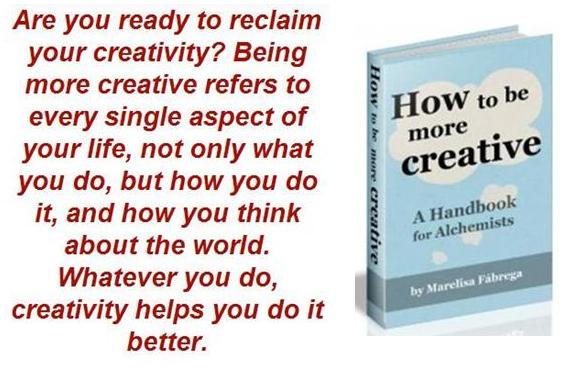
 Marelisa Fabrega is a lawyer and entrepreneur. She holds a Bachelor of Science in Business Administration from Georgetown University in Washington, D.C., as well as a Juris Doctor from the Georgetown University Law Center. You can learn more about her
Marelisa Fabrega is a lawyer and entrepreneur. She holds a Bachelor of Science in Business Administration from Georgetown University in Washington, D.C., as well as a Juris Doctor from the Georgetown University Law Center. You can learn more about her 





